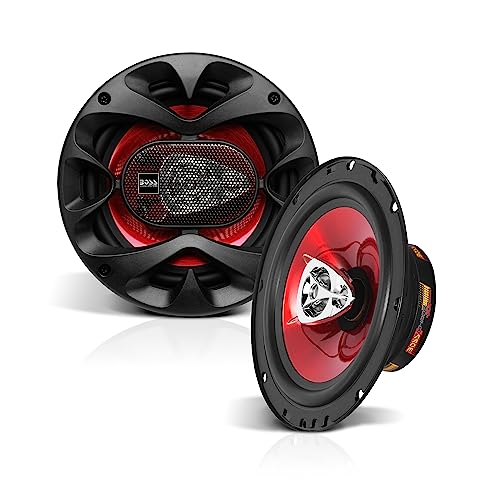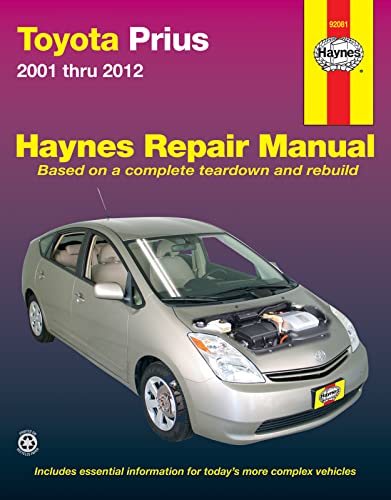As an Amazon Associate, I earn from qualifying purchases
If you own a Toyota Tundra or are thinking about getting one, you might have come across the term “Auto LSD” and wondered what it means. Understanding this feature can make a big difference in how your truck performs, especially when driving off-road or in tricky conditions.
You’ll discover exactly what Auto LSD is, how it works, and why it matters for your Tundra. Keep reading to unlock the full potential of your truck and take your driving experience to the next level.

Credit: www.youtube.com
Auto Lsd Basics
The Auto LSD on a Toyota Tundra helps improve traction. It controls power between the rear wheels. This system is useful in slippery or uneven conditions. Understanding its basics shows why it matters for your Tundra.
How Auto Lsd Works
Auto LSD stands for Automatic Limited Slip Differential. It senses when one rear wheel spins faster than the other. Then, it applies brake pressure to the spinning wheel. This forces power to the wheel with better grip. This process happens automatically without driver input.
It differs from a locking differential, which locks both wheels together. Auto LSD only activates when needed. This helps keep the vehicle stable and balanced during turns and on rough roads.
Benefits Of Auto Lsd
Auto LSD improves traction on wet, icy, or loose surfaces. It reduces wheel spin and helps you move forward smoothly. This system enhances safety by preventing loss of control. It also reduces tire wear by balancing power between wheels.
For off-road driving, Auto LSD gives better grip on rocks or mud. It supports your Tundra’s strong performance in tough conditions. This feature increases confidence and control while driving.
Credit: www.tundratalk.net
Auto Lsd In Toyota Tundra
The Toyota Tundra is a strong and reliable truck built for tough jobs. Auto LSD, or Automatic Limited Slip Differential, helps improve traction. It automatically sends power to the wheel with the most grip. This feature is very useful on slippery roads or rough terrain.
Auto LSD in the Toyota Tundra makes driving safer and more controlled. It helps prevent wheel spin and keeps the truck moving forward. Many drivers find it helpful for off-road adventures and daily driving in bad weather.
Factory Vs Aftermarket Options
Toyota offers Auto LSD as a factory option on some Tundra models. This means it comes installed from the factory. Factory units are designed to work perfectly with the truck’s systems. They often have a warranty and require little maintenance.
Aftermarket Auto LSD options are also available for the Tundra. These parts can be added later to trucks without factory LSD. Aftermarket units vary in price and quality. Installation may need a professional mechanic. They can improve traction but might not fit as seamlessly as factory parts.
Compatibility With Different Models
Auto LSD is compatible with many Toyota Tundra models. Most modern Tundras can use factory or aftermarket LSD units. Older models might need specific parts or modifications. It is important to check the year and drivetrain before buying.
Some Tundra trims come standard with Auto LSD. Others offer it as an option. Rear-wheel-drive and four-wheel-drive models may have different LSD types. Knowing your truck’s setup helps find the right Auto LSD solution.
Performance Impact
The Auto LSD (Limited Slip Differential) on a Toyota Tundra affects how the truck performs in different driving conditions. It helps control power to the wheels, improving traction and stability. This feature changes how the Tundra handles both off-road and on-road situations, making it more capable and safer.
Off-road Advantages
Auto LSD helps the Tundra maintain grip on rough terrain. It sends power to the wheel with the most traction. This prevents wheels from spinning uselessly in mud or sand. The truck climbs hills better and crosses uneven ground with ease. Drivers feel more confident on trails and rocky paths.
On-road Handling Improvements
On paved roads, Auto LSD improves stability during turns. It balances power between rear wheels, reducing wheel slip. This leads to smoother cornering and better control. The Tundra responds well to sudden changes in road conditions. It enhances safety in wet or slippery weather.
Maintenance And Care
Proper maintenance and care keep the Auto LSD on your Toyota Tundra working well. This system helps improve traction by controlling wheel spin. Taking care of it ensures safe driving and prevents costly repairs. Regular checks help spot problems early. Following the right steps keeps your vehicle reliable on all roads.
Signs Of Wear
Listen for unusual noises like clunking or grinding from the rear axle. Feel for vibrations or difficulty when turning corners. Notice if the wheels slip more than usual on slippery roads. These signs may indicate wear in the Auto LSD system. Early detection helps avoid bigger damage.
Fluid Change Recommendations
Change the differential fluid as recommended by Toyota, usually every 30,000 to 60,000 miles. Use the correct type of gear oil to protect the Auto LSD components. Clean fluid helps reduce friction and heat inside the differential. Regular fluid changes extend the life of the system and improve performance.
Installation Process
Installing an Auto LSD on a Toyota Tundra enhances traction and off-road performance. The process requires careful steps and some mechanical knowledge. Understanding the installation helps in deciding the best approach for your vehicle.
Professional Vs Diy
Choosing between professional installation and DIY depends on skills and tools. Professionals have experience and proper equipment to install Auto LSD correctly. They ensure safety and proper function after installation.
DIY installation can save money but needs time and patience. You need a good repair manual and the right tools. Mistakes during installation can cause damage or reduce performance.
Cost Considerations
Professional installation costs vary by location and shop rates. It usually includes labor and parts, which can add up. Expect higher costs but less risk of errors.
DIY installation reduces labor cost but requires buying tools and parts. Time investment is significant and mistakes may lead to extra expenses. Consider your budget and skills before deciding.
Common Issues And Troubleshooting
Auto LSD in a Toyota Tundra helps improve traction by controlling wheel slip. Like all mechanical parts, it can face issues over time. Knowing common problems helps keep your truck running smoothly. Troubleshooting these problems early avoids bigger repairs later.
Noise And Vibration
Strange noises or vibrations can indicate Auto LSD trouble. A grinding or clicking sound often means worn gears or bearings. Vibrations might come from uneven wear or damaged parts inside the differential. Check for unusual sounds during turns or acceleration. Early attention to noise prevents severe damage and costly fixes.
Reduced Effectiveness
Auto LSD may lose its ability to control wheel slip properly. This can cause wheels to spin more on slippery surfaces. Reduced effectiveness might result from low fluid levels or dirty differential oil. Regular fluid checks and changes keep the system working well. Worn clutches inside the LSD also lower performance and need inspection.
Comparison With Other Traction Systems
The Auto LSD on a Toyota Tundra is one of several traction systems. Each system helps improve grip and control on slippery surfaces. Understanding how Auto LSD compares with other traction systems helps you see its strengths and limits.
Auto Lsd Vs Electronic Traction Control
Auto LSD uses mechanical parts to transfer power between wheels. It helps the wheel with more grip get more power. Electronic Traction Control uses sensors and brakes to stop slipping wheels. It reduces power to slipping wheels to keep control. Auto LSD works better in steady, low-speed driving on rough terrain. Electronic Traction Control reacts faster in slippery spots at higher speeds. Both improve traction but in different ways and conditions.
Auto Lsd Vs Locking Differentials
Locking differentials lock both wheels on an axle to turn together. This gives equal power to both wheels, even if one slips. Auto LSD only limits slip but does not fully lock wheels. Locking differentials are better for tough off-road or deep mud. Auto LSD is smoother and better for daily driving and light off-road use. Lockers require more driver input and can be less smooth on pavement.
Credit: www.tundras.com
Frequently Asked Questions
What Does Auto Lsd Mean On A Toyota Tundra?
Auto LSD stands for Automatic Limited Slip Differential. It helps improve traction by controlling wheel spin.
How Does Auto Lsd Work On A Toyota Tundra?
It uses the brakes to slow a spinning wheel, sending power to the wheel with grip.
Is Auto Lsd Useful For Off-road Driving?
Yes, it helps keep traction on slippery or uneven surfaces, making off-road driving safer.
Can Auto Lsd Improve Towing Performance On A Tundra?
Yes, it helps maintain control and traction when towing heavy loads or driving on rough roads.
Does Auto Lsd Require Maintenance Or Special Care?
No special maintenance is needed. It works automatically and is built into the vehicle’s system.
Can Auto Lsd Affect Fuel Efficiency On A Toyota Tundra?
Auto LSD has minimal impact on fuel use. Its main focus is improving traction and safety.
Conclusion
Auto LSD on a Toyota Tundra helps improve traction on slippery roads. It sends power to the wheel with the most grip. This feature makes driving safer and more stable. It works automatically, so drivers don’t have to worry. Understanding Auto LSD can help you appreciate your truck more.
It’s a useful part of the Tundra’s design. Knowing how it works helps in tough driving conditions. This feature adds confidence during off-road or wet surface drives. Simple but effective for better control and safety.
As an Amazon Associate, I earn from qualifying purchases


